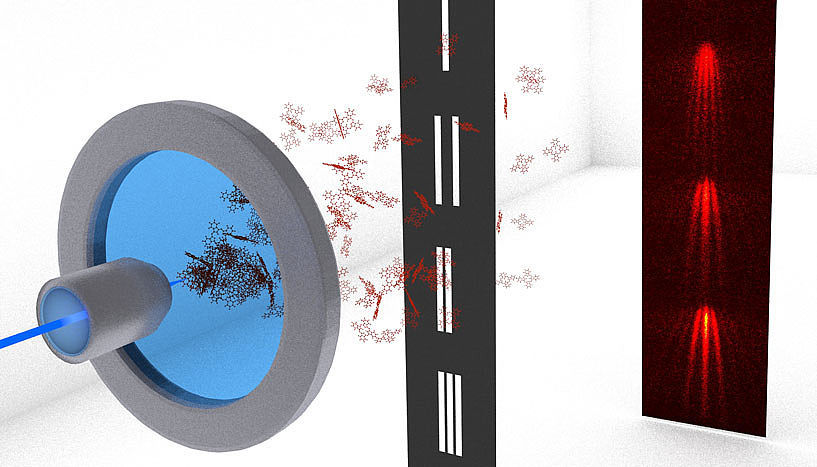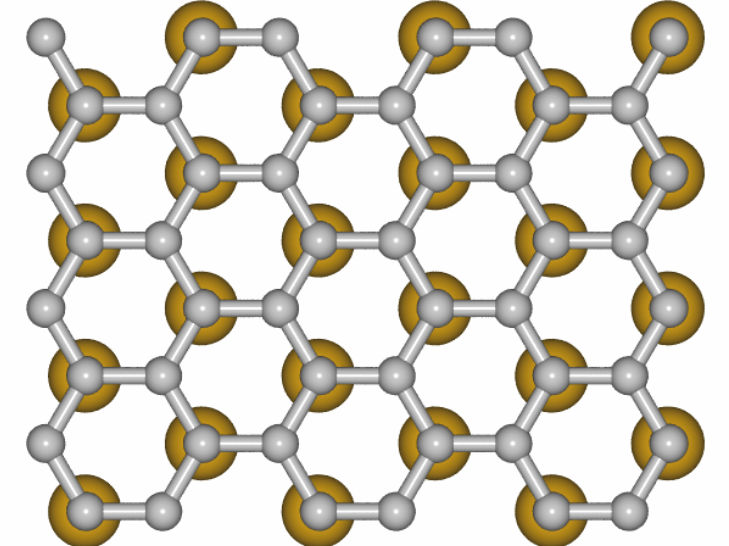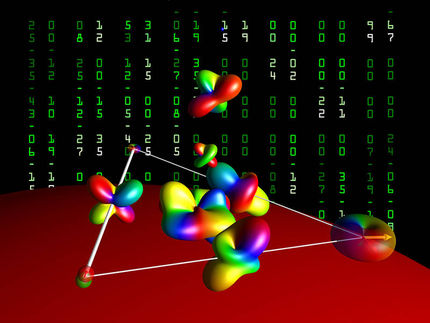Massive particles test standard quantum theory
First explicit bounds from interference experiments with matter waves
In quantum mechanics particles can behave as waves and take many paths through an experiment, even when a classical marble could only take one of them at any time. However, it requires only combinations of pairs of paths, rather than three or more, to determine the probability for a particle to arrive somewhere. This principle is a consequence of Born’s rule, a cornerstone of quantum physics and any measured violation of it might hint at new physics. Now, researchers at the Universities of Vienna and Tel Aviv have addressed this question for the first time explicitly using the wave interference of large molecules behind various combinations of single, double, and triple slits. The analysis – published in the Journal ‘Science Advances’ – confirms the formalism of established quantum physics for massive particles.

Comparing the diffraction patterns behind a combination of precisely written slits allows testing quantum mechanics with complex molecules.
Copyright: Group for Quantum Nanophysics, Faculty of Physics, University of Vienna; Image-Design: Christian Knobloch
Quantum mechanics describes how matter behaves on the smallest mass and length scales. However, the absence of quantum phenomena in our daily lives has triggered a search for minimal modifications of quantum mechanics, which might only be noticeable for massive particles. One candidate is to search for so-called higher-order interference. In standard quantum mechanics, the interference pattern resulting from an arbitrary number of non-interacting open paths can always be described by all combinations of pairs of paths. Any remaining pattern would be due to higher-order interference and be a possible indicator for new physics.
While this rule has been tested before with light and microwave radiation, researchers at the Universities of Vienna and Tel Aviv have now run for the first time a dedicated experiment with massive molecules. “The idea has been known for more than twenty years. But only now do we have the technological means to bring all the components together and build an experiment capable of testing it with massive molecules,” says Christian Brand, one of the authors of the study.
Multi-slit matter wave diffraction
In their experiments at the University of Vienna, researchers of the Quantum Nanophysics Group headed by Markus Arndt prepared complex organic molecules as matter waves. This was achieved by evaporating them from a micron-sized spot in high vacuum and letting them evolve freely for some time. After a while, each molecule delocalized, spreading across many places at once. This means that when each molecule encounters a mask containing multiple slits, it can traverse many of the slits in parallel. By carefully comparing the position of molecules arriving at the detector behind a combination of single-, double- and triple slits they were able to place bounds on any multipath contribution.
Nanofabrication enabling technology
A crucial component of the experiment is the mask - an ultra-thin membrane into which arrays of single-, double- and triple-slits were fabricated. It was designed and fabricated by Yigal Lilach and Ori Cheshnovsky at Tel Aviv University. They had to engineer a diffraction mask, where the maximum deviation in the slit dimensions was not much larger than the size of the molecules it was diffracting. The mask was integrated in the Vienna laboratory and the researchers studied a broad range of molecular velocities in the same experimental run. For all of them, the scientists found the interference pattern to follow the expectations of standard quantum mechanics with an upper bound in the deviation of less than one particle in a hundred. “This is the first time an explicit test of this kind has been conducted with massive particles”, says Joseph Cotter, the first author of this publication. “Previous tests have pushed the frontiers with single photons and microwaves. In our experiment, we put bounds on higher-order interference of massive objects.”
Original publication
Other news from the department science

Get the chemical industry in your inbox
By submitting this form you agree that LUMITOS AG will send you the newsletter(s) selected above by email. Your data will not be passed on to third parties. Your data will be stored and processed in accordance with our data protection regulations. LUMITOS may contact you by email for the purpose of advertising or market and opinion surveys. You can revoke your consent at any time without giving reasons to LUMITOS AG, Ernst-Augustin-Str. 2, 12489 Berlin, Germany or by e-mail at revoke@lumitos.com with effect for the future. In addition, each email contains a link to unsubscribe from the corresponding newsletter.
Most read news
More news from our other portals
Last viewed contents
Patient_Diary
Dobutamine
Iodargyrite
Bertram_Fraser-Reid
BASF and three top European universities team up on functional materials research - Goal: innovation in multi-materials and systems

Young start-up team develops new reference materials for direct microanalysis of solids - Setting new standards in solids analysis




























































